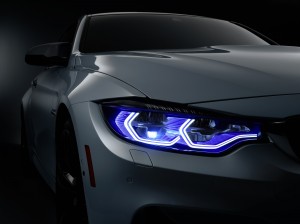Text : Bhargav TS
The global automotive lighting market is growing substantially in terms of volumes and technology upgradation. The segment is estimated to grow at a CAGR of 7.95% in between 2015 to 2020. Increasing vehicle sales and production and technological advancements triggered by growing safety concerns and stringent lighting regulations are the key drivers of the automotive lighting market. The automotive lighting market has witnessed decent growth in developing countries as well as developed ones. While the advanced markets are propelled by the introduction of newer technologies, markets in developing regions such as Asia Pacific and Africa are driven by increasing vehicle production.
Asia is estimated to be the largest consumer of automotive lighting in the world. India, China, Japan, and South-Korea are the main contributors to the automotive lighting market in the region. Owing to the increasing sales of premium vehicles, low manufacturing costs, and favorable government policies, several automotive companies are expanding their facilities in Asia. North-America is estimated to be the second-largest market for automotive lighting, due to the increasing demand for advanced technology. The global automotive lighting market size, in terms of value, is estimated to be $20.1 Billion in 2015. Emerging countries such as China and India are witnessing high growth, while the European and North American markets are estimated to grow at a decent rate during the forecast period.
Key automotive lighting technologies like halogen, xenon, LED, and adaptive lighting are taking new shape. Due to this sudden shift in the technology, the Rs 1500 crore Indian automotive lighting industry is travelling in a brighter path. In India the lighting industry comprises mainly of lamp and bulb manufacturers and the leading lamp manufacturers include Lumax Industries, Hella, Neolite Industries, Fiem, India Japan Lighting, Valeo and Minda. The major automotive bulb manufacturers include Philips, Osram and Siemens. These players dominate the OEM segment in the lighting segment which forms the major chunk of the lighting industry. Beyond this segment is the aftermarket and the unorganised segment that comprise hundreds of business units spread across the country.
The migration from conventional filament and halogen bulbs to LEDs is comparatively expensive but with voluminous production and the frugal adoption the cost will be optimised very soon. In the coming years this new technology will be the common platform for majority of the lamps. LEDs will be sold soon at a competitive price with the above mentioned voluminous manufacturing in place said, Mohit Sehgal, Sr. Vice President, Marketing and Business Development, Lumax Industries. There is a great opportunity for Indian manufacturers to have a chunk of business from the global market, says an industry veteran as India is well equipped to adopt new technologies.
Like the lamp manufacturers, even bulb-makers are divided into 2 broad categories OE and aftermarket. The OE segment in India is dominated by Philips, Phoenix and Osram, meanwhile there are also few other companies like Autopal, Hi-Lux, Neolight operate in all the segments. The big threat comes for the established players is from the small players who are trying to bring cheap products from China and Taiwan. “Those in grey market operations directly bring in the products from outside the country and thereby save on the duties which is almost 38%.
Rajesh Sharma, Executive Director, Marketing and Development, Fiem Industries feels that, most of the vehicle manufacturers are keen to make minor changes in their vehicles, which calls for a change in the shape and design of the lamps. This has resulted in shortening of lead time. “Lighting will change very rapidly in the future and if you fast-forward another 10 years you will see a lot more technologically advanced products,” he added.











Leave a Reply